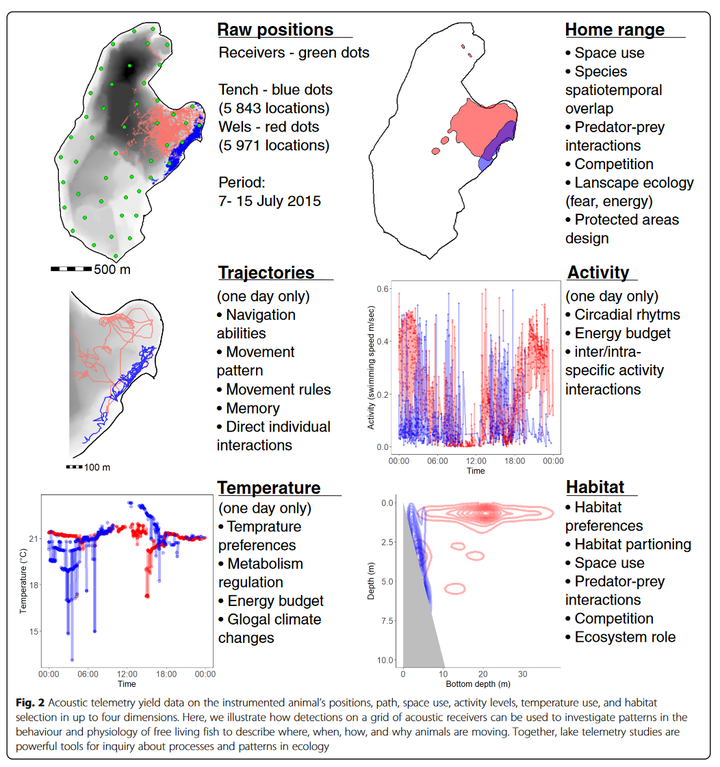A role for lakes in revealing the nature of animal movement using high dimensional telemetry systems

Abstract
Movement ecology is increasingly relying on experimental approaches and hypothesis testing to reveal how, when, where, why, and which animals move. Movement of megafauna is inherently interesting but many of the fundamental questions of movement ecology can be efficiently tested in study systems with high degrees of control. Lakes can be seen as microcosms for studying ecological processes and the use of high-resolution positioning systems to triangulate exact coordinates of fish, along with sensors that relay information about depth, temperature, acceleration, predation, and more, can be used to answer some of movement ecology’s most pressing questions. We describe how key questions in animal movement have been approached and how experiments can be designed to gather information about movement processes to answer questions about the physiological, genetic, and environmental drivers of movement using lakes. We submit that whole lake telemetry studies have a key role to play not only in movement ecology but more broadly in biology as key scientific arenas for knowledge advancement. New hardware for tracking aquatic animals and statistical tools for understanding the processes underlying detection data will continue to advance the potential for revealing the paradigms that govern movement and biological phenomena not just within lakes but in other realms spanning lands and oceans.